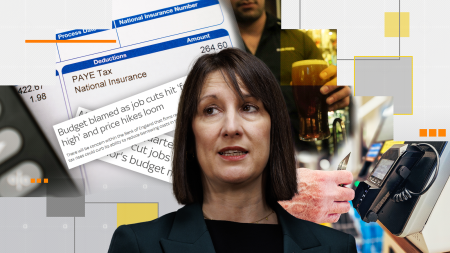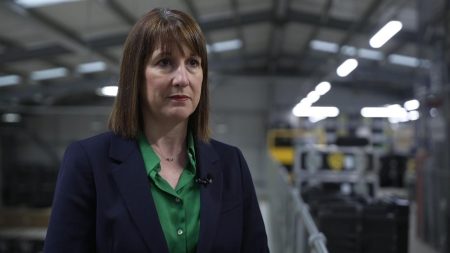The Unseen Economic Impact of Britain’s Declining Fertility Rate
The United Kingdom is facing a profound demographic shift, as its fertility rate continues to plummet to historic lows. In 2023, the average number of children born to a woman in England and Wales over her lifetime dropped to 1.44, the lowest level since records began in 1938. This trend paints a concerning picture for the country’s economic future, as fewer working-age individuals will be available to support public services, pension systems, and overall economic growth. According to Joeli Brearley, founder of the advocacy group Pregnant Then Screwed, this decline is a "ticking timebomb" for the nation. If the fertility rate continues to drop, Britons can expect higher taxes, smaller pensions, weaker public services, and an older retirement age.
The Causes of Britain’s Shrinking Families
Experts point to two primary drivers behind the decline in fertility rates: a growing number of young people who choose not to have children and an economy that makes parenthood increasingly difficult for those who do. Gen Z adults, in particular, are more likely to opt out of having children than previous generations. Approximately 15% of Gen Z adults aged 18-25 say they definitely will not have children, compared to 5-10% of millennials at the same age. Adwoa Amankwah, a 23-year-old midwifery assistant from Manchester, exemplifies this trend: "Looking after yourself in this economy is so difficult. I cannot imagine looking after another human being. It’s just insane." The cost of raising children, the challenge of finding a suitable partner, and the pressures of modern life are key factors influencing these decisions.
The Economic Burden of Childcare and Parenthood
For those who do want children, economic realities are often the deciding factor. The cost of childcare has become prohibitively expensive, with the average price of a part-time nursery place for a child under two years old reaching £7,596 a year in March 2024. For three children—the size of the average family in 1964, when fertility rates peaked—parents would face a staggering £43,503 bill, 16% more than the average worker’s entire pre-tax salary. Emily Steele, a 27-year-old from Birmingham, planned to have three children but found herself financially unable to do so after the birth of her first child. "I feel like they’re my children," she said of the frozen embryos she and her partner cannot afford to bring to term. "It’s a torn decision: Do we get rid of them completely and never have the chance? Or do we make it difficult for ourselves financially and have another baby?"
Parental Leave and the Gendered Economics of Care
The challenge of parenthood extends beyond childcare costs. The UK’s parental leave policies are among the least generous in Europe, placing a disproportionate burden on mothers. Fathers are entitled to just two weeks of paid leave, while mothers can take up to 52 weeks, though 13 of these weeks are unpaid. Many families are forced to rely on savings or credit cards to get through the first few months of parenthood, with 76% of mothers reporting debt or financial strain due to low maternity pay. This system, as Professor Peter Moss notes, is "implicitly matriarchal," assuming that women will take on the majority of caregiving responsibilities. As a result, many women are delaying or forgoing parenthood to pursue their careers, knowing that taking time off could derail their professional ambitions.
Housing Costs and the Delayed Dream of Family
Housing costs have also become a major barrier to starting a family. The average one-bedroom home in England now costs 47% of women’s median earnings, up from 36% last year. This has pushed the most economically advantageous age for having children into a woman’s late 30s, long after peak fertility. "One of the biggest things is earnings aren’t keeping up with the cost of housing," said Mary-Ann Stephenson of the UK Women’s Budget Group. This trend is exacerbated by austerity measures, which have cut funding for social programs like Sure Start, a network of parenting support hubs introduced by Labour in 1999. Since 2010, the UK’s fertility rate has fallen faster than any other G7 country, with areas of higher deprivation experiencing a 10% faster decline than affluent areas.
The Risk of Depopulation and the Need for Change
If the fertility rate continues to decline, the UK faces a future of population decline, with profound implications for its economy and society. Workers will gravitate to cities, leaving rural areas without essential services—a trend already evident in countries like Japan and South Korea, which have even lower fertility rates. South Korea, for example, has the world’s lowest fertility rate at 0.72 in 2023, and the UK appears to be following a similar trajectory. Professor Sojung Lim warns that the UK’s economic conditions, including high house prices, inflexible workplace culture, and lack of support for working parents, are driving this trend. Without systemic change, the UK risks a future of shrinking populations, economic instability, and reduced quality of life for its citizens. To address this crisis, policymakers must prioritize affordable childcare, equitable parental leave, and measures to alleviate the economic pressures on families. The stakes could not be higher.















